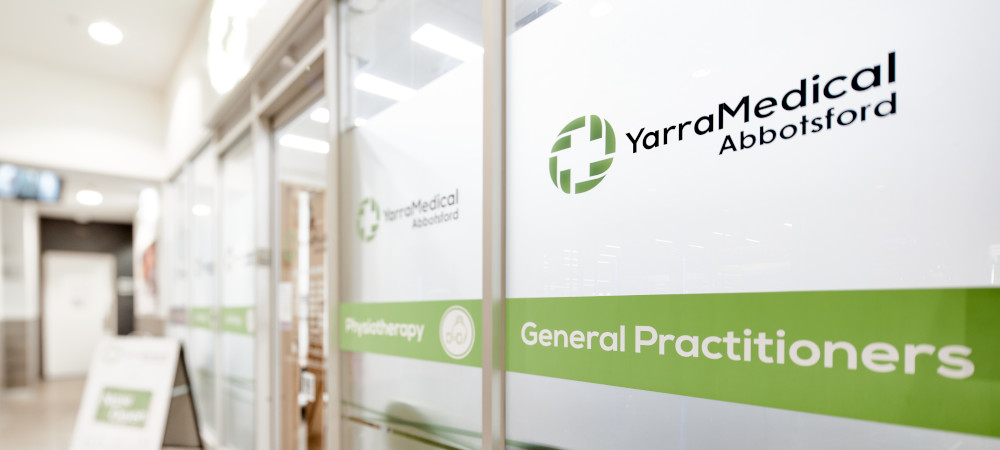Typhoid Vaccine
Not all GP clinics in Melbourne stock travel vaccinations. However, Yarra Medical stocks a full range of travel vaccines, including the typhoid vaccine.
There are three types of typhoid fever vaccination available in Australia, plus an additional one that includes the hepatitis A vaccine. It is important to note that typhoid vaccines are not 100 per cent effective; around 20 to 50 per cent of those exposed to typhoid fever will contract it. If travelling to a high risk area, such as developing countries with poor sanitation, you need to book an appointment with us to receive the vaccine at least 2 weeks prior to departure. Also, the vaccines do not last indefinitely, so even if you have received the vaccination in the past, you may need it again. Come in and speak with us to find out more.
Typhoid vaccine side effects
The side effects of the typhoid vaccines generally include headache, mild fever or swelling at the injection site. These symptoms are usually mild and do not require any specific treatment.
Who should get the vaccine?
Routine vaccination against typhoid fever isn’t necessary in a country like Australia. There are, however, circumstances where immunisation is strongly recommended, which are:
- travelling to areas with a high incidence of Salmonella typhi
- living with a person or having contact with a person who is being or has been treated for typhoid fever
- any lab workers whose job brings them into contact with Salmonella typhi
What is typhoid fever?
Typhoid, or typhoid fever, is a bacterial infection that is usually contracted in places with unsafe water or poor sanitation. It is caused by the bacterium Salmonella typhi and infects the intestinal tract and bloodstream. An infected person carries the bacterium in their faeces and urine, and if they don’t wash their hands after going to the toilet, they can then spread it to surfaces that may come into contact with food or be touched by other people. Typhoid fever is commonly transferred through contaminated food or water. If left untreated, typhoid fever kills one in five patients.
This disease is a serious worldwide concern, responsible every year for 21 million new infections and 150,000 deaths. There also indications that vaccine-resistant strains of typhoid fever are becoming more prevalent.
What can I do to avoid getting typhoid fever?
Here are some things you can do to reduce your risk of contracting typhoid fever:
- Boil water vigorously for one minute or, better still, buy bottled water. Bottled carbonated water is safe than uncarbonated water.
- Don’t use ice unless you know it’s made from bottled water.
- Avoid any foods that may have been made with contaminated water, like popsicles or flavoured ices.
- Eat food that has been cooked well and is steaming hot.
- Eat vegetables that can be peeled. Lettuce is easily contaminated and hard to wash thoroughly.
- Eating food from street vendors is a big part of travelling in certain parts of the world, and a way of immersing yourself in their culture. Keep in mind, though, that many travellers get sick from eating food bought from street vendors. Be cautious, and try to stick to food that is cooked well and piping hot. Also eat at appropriate hours; don’t have lunch at 3pm – eat meals when the locals do, as that is when the food is freshest.
What are the symptoms of typhoid fever?
There are many symptoms of typhoid fever, which include fever, fatigue, sore throat, cough, headache and abdominal pain. Complications of typhoid can include intestinal bleeding, intestinal perforation, meningitis, and inflammation or infection of organs.
You are at greater risk of contracting typhoid if you:
- travel to areas where typhoid is widespread
- come to Australia from places where typhoid is widespread
- have contact with anyone who is infected
- are a young child, who is at greater risk of infection than adults
Did you know…?
The earliest typhoid vaccines were developed by German and British researchers in 1896, and were in fact some of the first bacterial vaccines to be created. These early vaccines were plagued with quality problems and came with some pretty nasty side effects, but they were much improved by World War I and used by all major powers to protect travellers and troops alike.
For more information please view the Better Health website.
For information on other vaccines, see also:





